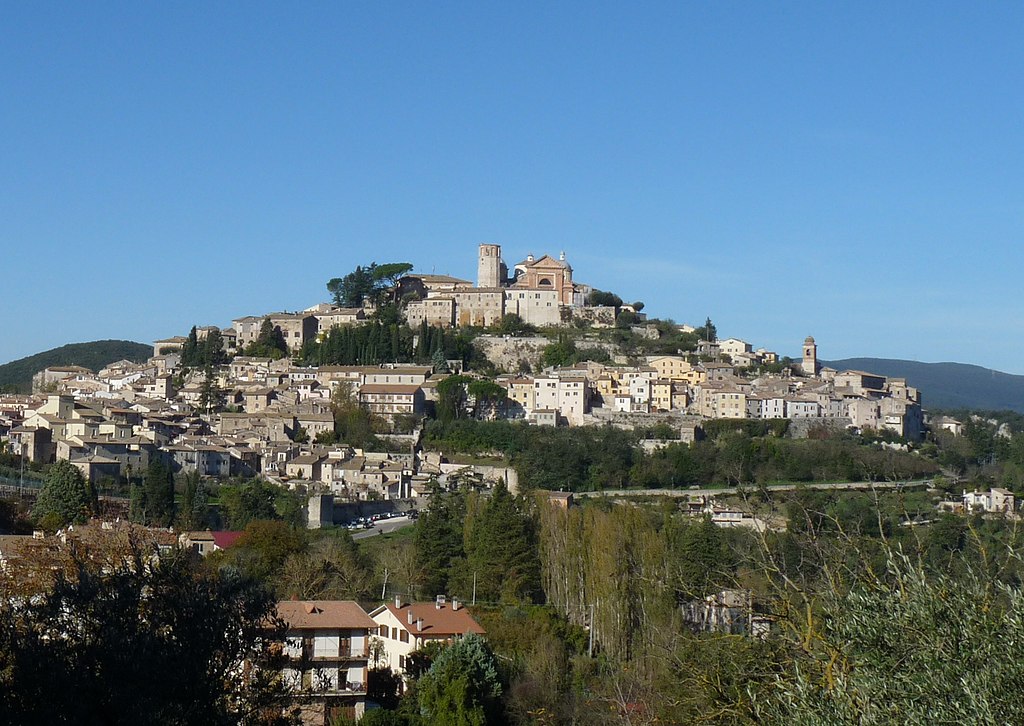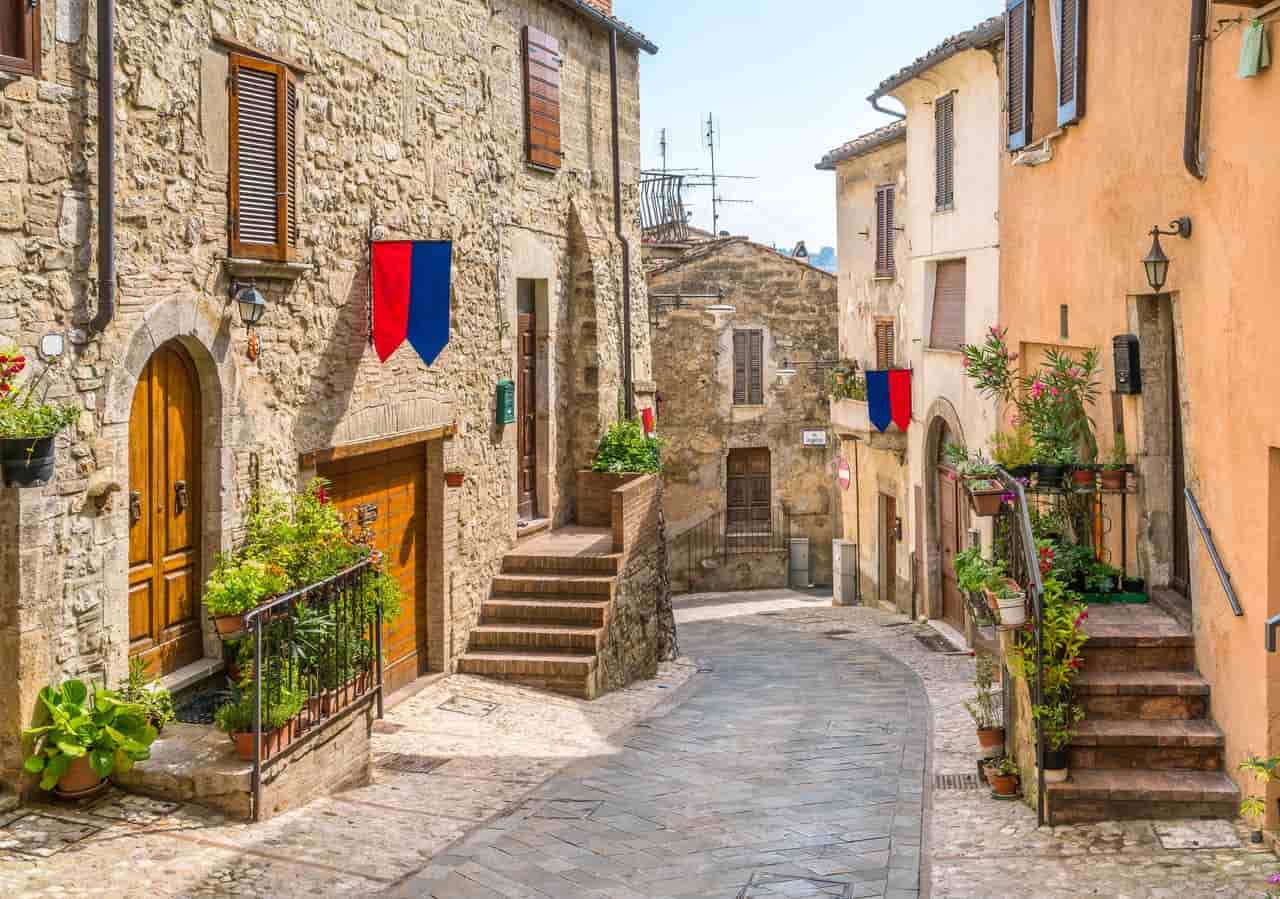


Amelia is located in the south-west of Umbria, near the border with Lazio.
The municipal territory is located at the southern end of the sub-Apennine chain of the Amerini mountains and is mainly hilly.
The city gives its name to the Amerino area, which brings together 9 municipalities: Amelia, Montecastrilli, Avigliano Umbro, Penna in Teverina, Lugnano in Teverina, Guardea, Alviano, Attigliano and Giove.

Amelia, formerly known as Ameria, according to the mythology founded by King Ameroe, is a city of very ancient origins: it was certainly among the first Italic centers. Cato, quoted by Pliny in Book III of Naturalis historia, states that the city was restored 963 years before the Roman war against Perseus, king of Macedon, and then in 1134 BC. Testimony of this age are the megalithic walls (VII-VI century BC), visible for a small stretch in the upper part of the city, within the perimeter formed by the monumental polygonal walls (IV-III century BC), which, together with those Roman and medieval, surround much of the town for about 2 km.

Border town, first Umbrian then Roman, Amelia boasts numerous testimonies of its past: in addition to the walls, which is the most important monument, we mention the interesting historic center, which extends for about 20 ha with its stratifications, the numerous Renaissance palaces, churches, remains of mosaics and baths. Amelia had a very flourishing period in the Roman era, so much so that it was counted among the most important Umbrian cities and the assumption of the status of Municipality after having allied itself with Rome.
The symbol of the Roman grandeur of the Town Hall is the bronze statue of Germanicus, a work of exceptional value and unique in the world, preserved in the city's archaeological museum.

The quantity and quality of historical relics of Roman origin found in Amelia are second only to the archaeological site of Carsulae in Umbria.
At the end of the Western Roman Empire, Amelia became part of the reign of Odoacer then in that of Theodoric, like the rest of Italy. In 548 Amelia was besieged and taken after 5 days by Totila, returned under the Byzantine Empire following the victory in the Gothic war of Belisario and Narsete.
With the descent of the Lombards in Italy in 568 Amelia found itself disputed between the Duchy of Spoleto (Lombard) and the Byzantine Empire, given that the Via Amerina in Umbria remained the main connection route of the Byzantine Corridor, the only route it allowed the connection between Rome, the seat of spiritual power, and Ravenna, the seat of the Byzantine government in Italy.

Several times there were occupations and successive liberations, both by military means and through negotiations. It was first occupied in the year 579 by the Duke of Spoleto Faroaldo I, then in 591 by his successor Ariulfo. In 592 there was the liberation by Romano, exarch of Ravenna, but Ariulfo reconquered the cities of the Umbrian corridor in the same year and returned under the control of the Byzantines only after the agreement between the Lombard king Agilulfo and Pope Gregory the Great.
This situation remained stable until 739, when the Lombard king Liutprando occupied Amelia, Orte, Bomarzo and Blera. Only after the meeting between Liutprand and Pope Zaccaria, which took place in Terni in 742, did Amelia return under the control of Rome. Amelia, throughout the Middle Ages and the Renaissance, will be in the axis of the Umbrian Ghibelline triad, that is, it will always - except in small and very rare cases - together with Terni and Todi as antithesis to the Umbrian Guelph axis composed of: Spoleto and Narni assisted by noble families Roman with expansionist aims.
Since the fifteenth century the popes have nominated a mayor from Rome three times. This circumstance is recalled every year as part of the historical events of the "Palio dei Colombi".
Amelia
Address: P.zza Matteotti - 05022
Phone: 0744 9761
Site:
http://www.comune.amelia.tr.it/Location inserted by
Katia Pangrazi